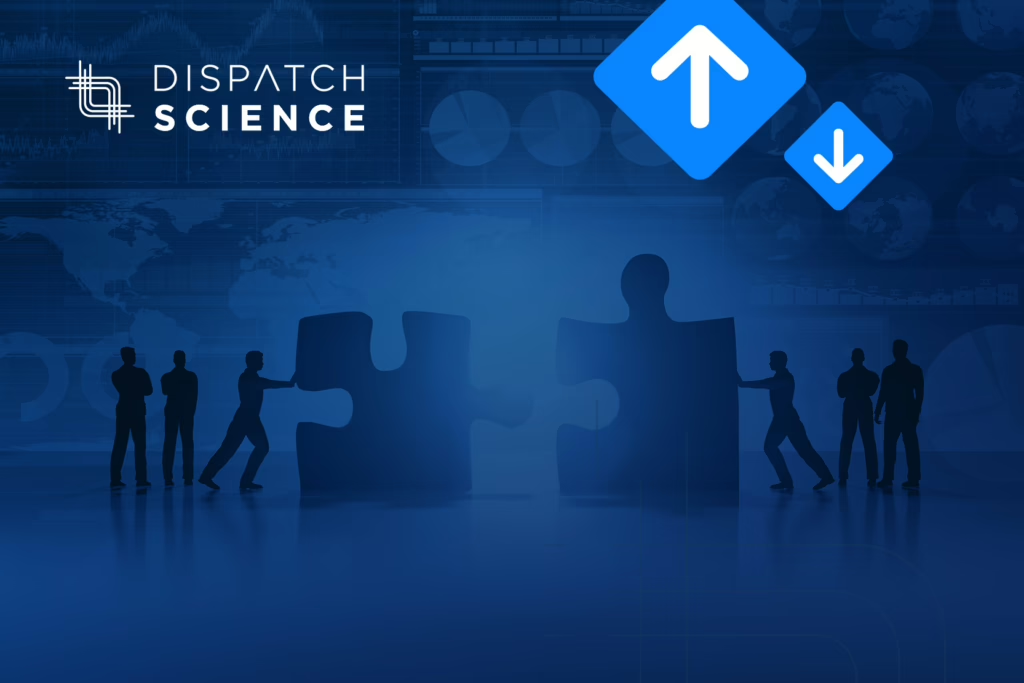As published on Sourcing Journal, on June 13 2025
Chain Reaction is Sourcing Journal’s discussion series with industry executives to get their take on today’s logistics challenges and learn about ways their company is working to keep the flow of goods moving. Here, Arthur Axelrad, co-founder & CEO of Dispatch Science, discusses how the transportation management company is leveraging artificial intelligence (AI)-powered solutions to streamline operations and provide real-time visibility for customers.
Nom : Arthur Axelrad
Title: Co-founder & CEO
Company: Dispatch Science
What is Dispatch Science?
Dispatch Science is a cloud-first logistics and delivery software platform and a leader in next-generation transportation management software for last-mile couriers and delivery businesses.
We use the power of AI, algorithms and integrated route optimization to simplify and streamline all aspects of dispatching and delivery operations for on-demand and last-mile shippers, carriers and couriers.
What industries do you primarily serve?
We primarily serve courier and parcel delivery, medical and pharmaceutical logistics, retail and e-commerce and third-party logistics (3PLs) companies. Which industry do you think has the most to teach fashion about improving their supply chain logistics?
I’d say that medical logistics is a good one to look to. When you’re handling life-saving medications or organ transplants, you need to develop and uphold incredible precision surrounding the chain of custody—every item tracked from source to patient with complete auditable logs. Fashion brands, especially luxury and sustainability-focused ones, could learn so much from this. Imagine being able to prove the authentic journey of a limited-edition handbag or verify those sustainability claims everyone’s making. The exception management protocols in medical are also fascinating—they have sophisticated workflows for when things go wrong, rather than scrambling to figure it out in the moment. For example, if a temperature-controlled pharmaceutical shipment goes outside the required range, there are predefined protocols: immediate alerts to all stakeholders, automatic rerouting to the nearest compliant facility, documentation requirements for regulatory compliance and clear escalation paths depending on the severity. Compare that to fashion, where a delayed shipment of limited-edition sneakers might trigger a flurry of panicked phone calls and improvised solutions. Medical logistics teaches you to plan for failure scenarios upfront, so when they happen—and they will—you have tested procedures that minimize impact and maintain service levels.
What are the main things brands and retailers could do (or stop doing) right now that would immediately improve logistics?
Replacing legacy electronic data interchange (EDI) systems with modern advanced passenger information (API) systems. I can’t tell you how many
companies I see still operating on batch processing that updates once or twice a day while their customers expect real-time everything. It’s like trying to compete in Formula 1 with a horse and buggy! Even streamlining packaging can give immediate returns. We’ve seen clients substantially cut shipping costs by rightsizing boxes and ditching unnecessary materials. Above all, though, I’d encourage leaders to stop thinking of logistics as this necessary evil and start treating it as a customer experience engine instead. A delivery experience is often the last touchpoint a customer has with a brand, so they need to make it memorable for the right reasons.
When it comes to creating efficiencies, there are quick wins and longer plays. What are a few things your company is doing to help its partners succeed on both fronts?
For immediate impact, we insist on carriers using tech-enabled solutions with AI-based route optimization. This isn’t just about transparency (though that’s important), it’s about real cost reduction through better routing. Automating customer notifications is another quick win that dramatically reduces support calls.
Long-term, we’re focused on building predictive analytics capabilities for demand and capacity planning. This helps get ahead of seasonal fluctuations rather than constantly reacting. The holy grail is of course end-to-end visibility with both upstream and downstream partners. When suppliers, carriers and customers are all connected through shared data, companies can best optimize the entire network rather than just their piece of it. Our platform is modular, too, so it scales with clients from startups to enterprise fleets.
What is the one thing brands and retailers could be doing to make better use of technology to improve logistics?
Integration, integration, integration! Most companies have these islands of technology: Their transportation management system (TMS) talks to their
warehouse system, their inventory system talks to their point of sale (POS), but nothing talks to everything else. When you create a unified view of operations, however, you unlock optimization opportunities that weren’t visible before. This integration enables AI-powered demand forecasting, dynamic pricing and real-time visibility platforms that actually improve customer communication
and reduce failed deliveries. The technology exists, it’s just a matter of connecting the dots.
Are you optimistic about the state of supply chains in the next few years?
I’m cautiously optimistic. Yes, we’re dealing with unprecedented challenges like labor shortages, geopolitical instability and evolving consumer expectations. However, the rapid adoption of AI, automation and data-driven decision-making is creating much more resilient and adaptive supply chains. What gives me the most hope is seeing technology democratization happen in real-time. Smaller operators are gaining access to capabilities that were previously only available to enterprise companies. When a 50-truck carrier can compete on technology with a 5,000-truck fleet, it levels the playing field and drives innovation across the entire industry.




